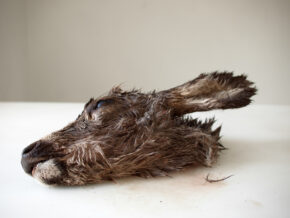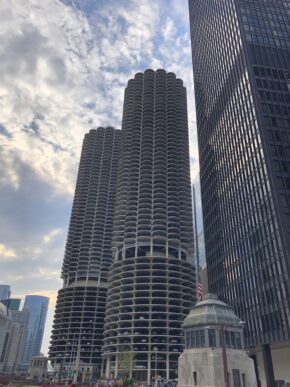I love portfolio reviews. It’s true. Believe it or not, I used to be a harsh critic of the process. Before I got involved, I raged against the system, in which photographers pay for meetings with industry professionals.
Then, I decided to listen to some advice from a few colleagues, and give it a try. It worked out very well for me, as my reviews at Review Santa Fe in 2009 and 2010 helped my work break out on the Internet, which led a host of sales and exhibitions.
Now, in my capacity as a writer here and at the New York Times Lens blog, I go to the reviews to look at work and write about it. You know this, as we’re in part 2 of my series about the Medium Festival of Photography in San Diego.
I’m pretty sure you guys enjoy looking at the work I see, because I always get great feedback on these articles. And of course, I do like to keep it entertaining, to ensure that you make it to the bottom of the piece to see the pictures. (Oh. Right. You could always skip to the photos? I suppose that’s true.)
Where am I headed? Is there a point? Yes, it’s that I’ve noticed in my last few reviews that these events are not just about people pitching. It’s more than the “what can you do for me” that you think it is. (That is, if you’ve never attended one before.)
In my experience, and perhaps it’s because I’ve been teaching for nearly 10 years, many of the artists come to the table seeking feedback. They want advice on how to get better. They ask all the right questions about where they are weak, and where they are strong.
For the artist, it’s like spending a few hundred dollars to go to grad school for the weekend. If you’re not frantically pitching someone, 20 minutes is a good amount of time for a conversation. You can learn a lot, if you’re willing to listen.
There are the big national reviews, sure, but there is now a system firmly in place with regional reviews, at festivals, all over the country. You can get some great advice, and benefit from participating in a mini-idea-cluster, without having to buy a plane ticket and rent a hotel room.
I’m off this week to photo NOLA, so we’ll have another slate of articles coming up for you in the New Year. But these festivals are everywhere. Just off the top of my head, I can throw out New York, Chicago, San Diego, Portland, New Orleans, Santa Fe, Atlanta, Boston, Houston, Denver and San Francisco.
I’m sure there are many more too. Which means that you might consider looking into what’s available in your neck of the woods. It’s hard to get genuine critical feedback from your friends and family. Certainly, it’s tough once you’re out of school.
Medium is a great example of a festival that was designed to serve its community. It brings people together to celebrate shared passion, and I think that’s something we could all use more of. Certainly, living as I do in the middle of nowhere, I sometimes get jealous of the opportunities available to my urban colleagues.
Back to the photographers, though, and let’s finish this off. As with last week, it’s in no particular order.
John DuBois was one of two artists on whom I was pretty tough. He’s a full-time software engineer, and showed me a project that I thought wasn’t quite up to snuff. Our signals got a bit crossed, as I could tell he didn’t think my criticism was quite appropriate. (I wanted more from him, and wasn’t afraid to say so.)
Then, he showed me a second project that I liked very much. It had all the elements I was craving: a personal connection, a sharp eye, and a more consistent image quality. John spends a lot of time out on the road, in his day job, and sees a series of hotels and motels where he beds down for the night. So he takes pictures to keep himself busy. These are great.
Lisa Layne Griffiths was the other photographer I tore into a bit. She showed me a series of set-up studio portraits that were a long way from ready. We broke down all the ways she could improve the project, and she knew how much work she had to do. But she was very enthusiastic about improving.
At the portfolio walk, I stopped to chat with her again. She showed me a small series that she’d made of soldiers returning home from the Iraq War. I was impressed. I like that the pictures are not exactly neutral, but neither are they sappy or overly emotional. They’re just right, and a great reminder to those of us not directly connected, that these continual wars have a real cost to far too many people in this country.
Jonas Yip is an Asian-American photographer based in Los Angeles. He spent some of his youth in Taiwan and Hong Kong, and worked on a series in Mainland China. It was difficult for him, he told me, to look like everyone else, while obviously being an outsider inside his skin.
I like the way his pictures made the smoggy sky into a positive element, by celebrating the drab color palette. And the repeating use of the people, always with their back to him, was smart as well.
Martina Shenal is a professor at the University of Arizona, and she recently spent a sabbatical in Japan. (China’s rival for power in the Pacific.) Martina and I spent a good deal of time talking about paper choices.
Many of the artists I met were using matte paper, which naturally decreases an image’s contrast, and, by extension, the illusion of three dimensionality. Pictures look flatter, and less vibrant, than they do on a lustrous, pearl, or glossy surface.
Despite the fact that Martina is a working professional, I shared with her the idea that her photographs would simply look better if she made some other choices. On screen, of course, we don’t have those problems. Several of her photos really captured that Japanese-Zen-vibe, and I’m sure you’ll like them below.
Amanda Hankerson and I met briefly at Review Santa Fe in June, and then again during Medium. We had a drink at the bar with a few friends, and despite the horrific lighting, she pulled out a Magcloud-type-publication to show me. Her project is called “The Hankersons,” and I love the premise.
Apparently, there are only Hankersons in the United States, and nowhere else. There aren’t many of them either, and as an early ancestor was a slave owner, there are African-American Hankersons, and Caucasian Hankersons. Random, no?
Amanda uses Facebook to track down her fellow Hankersons, and then photographs them. Because that’s what photographers do. I think there was a Hankerson who played for the 49ers in the 90’s, so maybe she can look into that.
Finally, we’ve got Dalton Rooney. He’s a photographer who recently moved back to Southern California, after living most of his life elsewhere. He’s been trekking around the landscape, re-familiarizing himself with the desert vernacular.
He showed me a few images that were printed rather dark, and that made for a moody viewing experience that I really enjoyed. There was almost a sense of foreboding in a landscape I normally associate with sunny-happy-joy-land. Nicely done.





































1 Comment
Jonathan,
Ate the whole thing. Thanks for keeping it entertaining so we make it to the bottom of the page. Nice touches throughout with your narrative and story about connecting with each of these photographers. There’s a sense of fostering and care that I read in your words that I find most wonderful.
Joe
Comments are closed for this article!